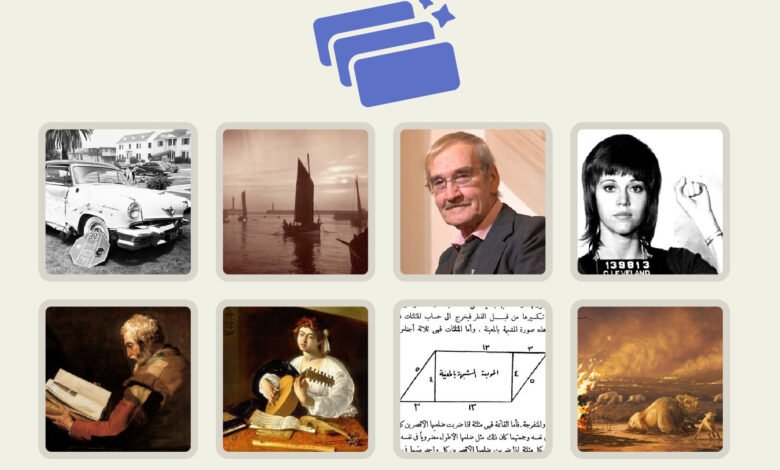Flashback NYT: Revisiting Iconic Moments Through the Lens of Time

introduction
Have you ever stumbled upon a story or an event from the past and wondered how it shaped the world today? The New York Times’ “Flashback” series does just that. Flashback NYT It takes us on a nostalgic journey through some of the most captivating moments in history, offering fresh insights and sparking conversations. Let’s dive into what makes this series so compelling and how it brings history alive for its readers.
What Is Flashback NYT?

“Flashback” is a feature series from The New York Times that revisits historical events, cultural milestones, and fascinating stories. Flashback NYT With its rich archive of over a century’s worth of journalism, the NYT team curates pieces that connect past events with modern-day relevance. These stories are more than just retellings—they’re a deep dive into the context, emotions, and ripple effects that make history meaningful today.
For instance, they’ve covered everything from groundbreaking inventions to pivotal political movements, often shedding light on forgotten details. The beauty of this series lies in its ability to transport readers to another era while still making the narrative feel relatable.Flashback NYT
Why Flashbacks Matter in Today’s World
In our fast-paced, ever-evolving society, it’s easy to lose track of the events that laid the foundation for where we are now. “Flashback NYT” serves as a reminder of the triumphs, struggles, and lessons from the past. But why does this matter?
For starters, history provides perspective. When we look back, we see patterns, recurring challenges, and opportunities to do better. For instance, understanding the women’s suffrage movement gives us a lens to view today’s gender equality battles. Similarly, revisiting moments like the Moon landing can reignite our curiosity and drive for innovation. Flashback NYT
Moreover, these flashbacks offer a sense of continuity. They show us how the threads of history are woven into our present, whether it’s the evolution of democracy, art, or technology. By drawing these connections, “Flashback NYT” fosters a sense of collective memory.
The Art of Storytelling in Flashback NYT
Good storytelling is at the heart of “Flashback.” Each article is meticulously researched, blending archival material with vivid narratives that draw readers in. The writers craft their stories with empathy and curiosity, ensuring that every detail serves a purpose. Flashback NYT
For example, when covering historical protests, the series doesn’t just list dates and facts. Instead, it delves into the voices of the people who lived through those moments. What were their hopes? What fears drove their actions? By humanizing history, “Flashback” makes it accessible and engaging.
The visuals, too, play a big role. Photographs, scanned newspapers, and even vintage advertisements transport readers visually. These elements don’t just add flair; they anchor the stories in their time, making them all the more immersive. Flashback NYT
Popular Themes Explored in Flashback
The diversity of topics in “Flashback NYT” ensures there’s something for everyone. Here are some recurring themes that stand out:
- Cultural Revolutions: From the jazz age to the rise of hip-hop, the series dives into cultural movements that reshaped society. These stories explore how art, music, and literature became mirrors of their time.
- Political Milestones: Whether it’s the signing of landmark treaties or the rise of influential leaders, “Flashback” offers a closer look at the political decisions that changed the course of history.
- Scientific Breakthroughs: Stories of discoveries, like the polio vaccine or the first photograph of a black hole, highlight the ingenuity and perseverance of the human spirit.
- Everyday Life in the Past: Beyond major events, “Flashback” often revisits daily life in different eras. What did people eat? How did they spend their leisure time? These slices of life make history feel tangible.
How Flashback Engages the Modern Reader
You might wonder—how does a story from decades ago captivate readers in today’s digital age? The answer lies in the storytelling approach and its modern relevance.
“Flashback” articles often tie historical moments to current issues, making them feel timely. For example, during global pandemics, they’ve revisited stories about the 1918 influenza outbreak, comparing how societies responded then versus now. This dual lens—of looking back and reflecting on the present—adds depth and resonance.
Furthermore, the use of digital tools enhances the experience. Interactive timelines, videos, and maps breathe life into the past. Readers aren’t just consuming text; they’re engaging with history in dynamic ways.
The Role of Archives in Flashback NY
Behind every great “Flashback” story is an impressive archive. The New York Times has meticulously preserved articles, photographs, and documents for over 170 years. These archives are a treasure trove, offering an authentic glimpse into history as it was reported at the time.
What’s remarkable is how these materials are reinterpreted for today’s readers. Instead of feeling outdated, they gain new meaning when viewed through a contemporary lens. It’s a reminder that the past isn’t static; it evolves with every retelling.
Lessons We Can Learn from Flashback NYT
Every “Flashback” story carries lessons—some overt, others subtle. By revisiting history, we gain clarity about human behavior, societal trends, and the enduring impact of our choices.
For instance, stories about resilience during times of crisis inspire hope. Accounts of activism remind us of the power of collective action. And tales of innovation spark curiosity and creativity. These lessons aren’t confined to the past—they guide us in shaping a better future.
Why Readers Love Flashback NYT
The popularity of “Flashback NYT” speaks volumes about our shared love for stories. Readers often describe the series as a time machine, transporting them to moments they’ve only read about in textbooks. Others appreciate its balance of depth and accessibility, which makes complex events easy to grasp.
There’s also a sense of nostalgia that draws people in. Whether it’s a story about a beloved cultural icon or a pivotal historical event, these articles evoke emotions that resonate across generations.
Final Thoughts: A Timeless Journey
“Flashback NYT” is more than just a history lesson—it’s a celebration of storytelling, memory, and connection. It reminds us that the past isn’t something to be forgotten; it’s a rich tapestry that continues to shape our present and future.
So the next time you stumble upon a “Flashback” article, take a moment to dive in. Who knows? You might discover a story that changes how you see the world today


